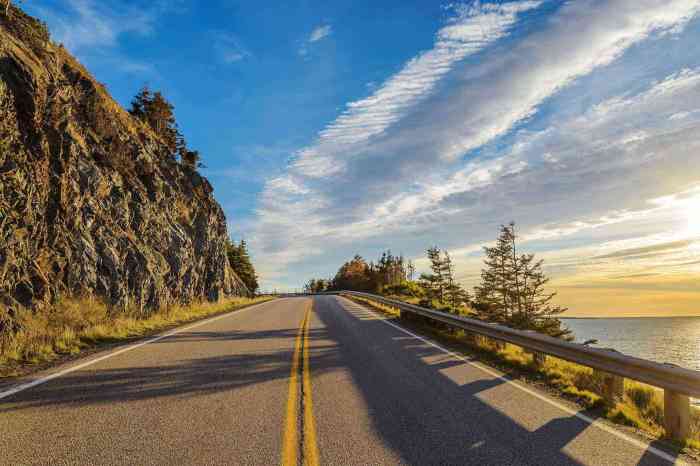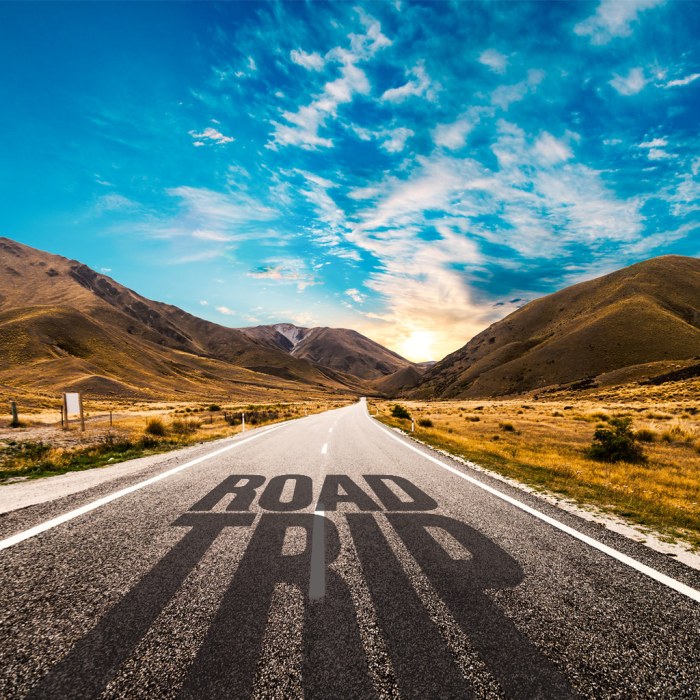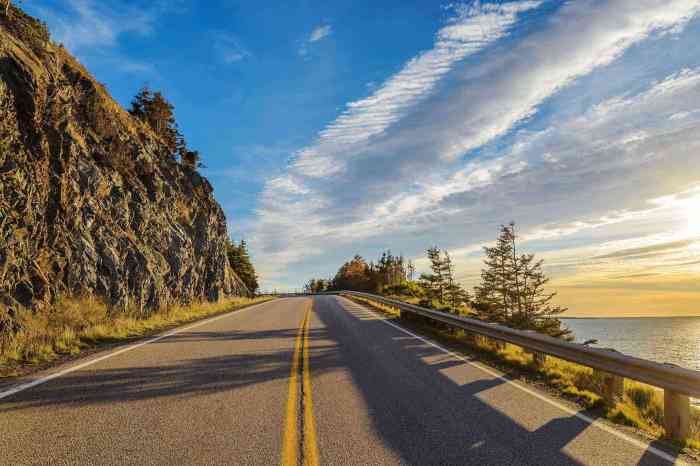Things to know before traveling to Oregon: Oregon beckons with its stunning natural beauty, diverse landscapes, and rich culture. From towering mountains to pristine beaches, this Pacific Northwest gem offers something for everyone. This guide dives deep into everything you need to know, from planning your trip to understanding local customs.
This comprehensive guide covers everything from the best time to visit for different activities, like hiking and beach trips, to essential travel documents and visa requirements. We’ll also explore practical planning considerations, including accommodation options, local transportation, and budgeting tips. Prepare for Oregon’s varied weather patterns, learn about local customs and etiquette, and discover the state’s diverse culinary scene.
We’ll also cover safety precautions and highlight popular tourist destinations and activities. Finally, we’ll delve into accessibility and inclusivity options for a more comprehensive travel experience.
Introduction to Oregon
Oregon, a Pacific Northwest gem, captivates visitors with its stunning natural beauty, rich history, and vibrant culture. From towering mountains to breathtaking coastlines, the state offers a diverse range of experiences, making it a popular destination for outdoor enthusiasts, history buffs, and those seeking a unique American adventure. Oregon’s appeal extends beyond its scenery; its spirit of innovation and progressive values contribute to its unique character.The state’s history is intertwined with the stories of Native American tribes who have inhabited the land for millennia, European settlers who arrived later, and the development of the West.
This blend of indigenous heritage and American expansion has shaped the cultural tapestry of Oregon, creating a unique and welcoming environment. This rich history is evident in its art, architecture, and traditions. Oregon’s present-day culture embraces a balance of its past with modern innovation and progress.
Oregon’s Diverse Landscapes
Oregon’s beauty lies in its incredible variety of landscapes. From the rugged Cascade Mountains, which dominate the central part of the state, to the dramatic Pacific coastline, Oregon offers a spectrum of experiences. The state’s diverse terrain encompasses everything from lush forests and alpine meadows to fertile valleys and high deserts. This diversity of ecosystems supports a remarkable array of plant and animal life.
This variety makes Oregon a popular destination for outdoor activities, such as hiking, camping, fishing, and wildlife viewing.
Regions of Oregon
Oregon is geographically divided into distinct regions, each with its own unique characteristics. These regions offer different experiences, from the bustling cities to the quiet wilderness. Understanding these regions helps travelers plan their trips effectively.
| Region | Description |
|---|---|
| Oregon Coast | Characterized by dramatic cliffs, sandy beaches, and rugged coastline. Known for its coastal towns, sea life, and opportunities for surfing, fishing, and whale watching. The Oregon Coast Aquarium in Newport is a popular attraction. |
| Cascade Mountains | A range of towering peaks, including Mount Hood, which offers a diverse landscape including alpine meadows, dense forests, and opportunities for skiing, hiking, and scenic drives. The region is a hub for outdoor enthusiasts. |
| Willamette Valley | A fertile agricultural region known for its vineyards, orchards, and abundant farmlands. The region is home to several cities, including Portland, and offers a mix of urban and rural experiences. Famous for its wine trails. |
| Eastern Oregon | A high desert region with vast landscapes, including the Blue Mountains and the high desert plateau. Offers opportunities for exploring unique wildlife, rock formations, and historical sites. |
| Southern Oregon | Features a mix of mountains, forests, and high desert regions. The region boasts Crater Lake National Park, a deep caldera lake, and offers diverse outdoor recreation. Crater Lake is a stunning example of nature’s grandeur. |
Essential Travel Information

Oregon, a state brimming with natural beauty, offers a diverse range of experiences, from breathtaking coastal hikes to serene mountain adventures. Planning your trip requires understanding the best time to visit, suitable transportation options, and the necessary travel documents. This section details crucial information for a smooth and enjoyable Oregon experience.Navigating the state’s diverse landscapes and activities requires careful consideration of the best time to visit, travel modes, and visa requirements.
Understanding these aspects ensures a more informed and enriching trip.
Best Time to Visit for Specific Activities
Different seasons in Oregon offer unique experiences. Spring and fall provide pleasant weather for outdoor activities, while summer brings warmth ideal for enjoying the beaches and hiking trails. Winter offers a different charm, perfect for skiing and snowboarding in the mountains. For example, spring is excellent for wildflowers and hiking in the Cascades, while summer is ideal for enjoying the coast’s beaches and watersports.
- Hiking: Spring and fall are ideal, with pleasant temperatures and fewer crowds than summer. Summer can be hot and dry in some areas, impacting hiking comfort.
- Beaches: Summer offers warm weather and sunshine, perfect for swimming and sunbathing. Spring and fall provide pleasant temperatures for enjoying the coastline.
- Water Activities: Summer is the best time to enjoy water sports like kayaking and paddleboarding. Be aware that water temperatures vary depending on the region and time of year.
- Skiing/Snowboarding: Winter months are essential for these activities. Popular destinations like Mount Hood offer fantastic snow conditions during the winter season.
Common Travel Modes
Oregon offers various transportation options. Driving is the most common method for exploring the state’s vast landscapes, but flying and train travel also provide convenient access to different regions.
- Driving: Renting a car is highly recommended for exploring the diverse regions of Oregon, allowing flexibility and freedom of movement.
- Flying: Portland International Airport (PDX) is the primary gateway for air travel to Oregon, offering connections to major cities within the US and internationally.
- Train: Amtrak provides train services across the country, including routes passing through Oregon. This is a scenic option for travelers interested in rail journeys.
Visa Requirements for International Visitors
The visa requirements for international visitors to Oregon depend on their nationality and the length of their stay. US immigration laws determine the necessary documents for international visitors.
Visa requirements vary greatly depending on your nationality. Consult the official US embassy or consulate website for specific information.
Accommodation Costs by Region
| Region | Average Cost (per night) |
|---|---|
| Portland Metro Area | $150-$300+ |
| Coastal Oregon (e.g., Cannon Beach) | $100-$350+ |
| Central Oregon (e.g., Bend) | $100-$250+ |
| Southern Oregon (e.g., Ashland) | $80-$200+ |
Note: Accommodation costs are estimates and can fluctuate based on the season, type of accommodation, and availability.
Necessary Documents for Travel to Oregon
Proper documentation is essential for a smooth trip. These documents confirm your identity and travel authorization.
- Passport: A valid passport is required for international visitors. Check the validity period for your passport to ensure it meets the required length of stay.
- Visa (if required): International visitors may need a visa depending on their nationality and the purpose of their visit.
- Travel Insurance: Travel insurance is strongly recommended to cover medical expenses, trip cancellations, or other unforeseen circumstances.
- Flight/Accommodation Bookings: Keep copies of your flight and accommodation bookings for reference.
Practical Planning Considerations
Oregon offers a diverse range of experiences, from outdoor adventures to cultural explorations. Careful planning is key to making the most of your trip. Understanding the costs, accommodation options, and local transportation systems will help you navigate your Oregon adventure smoothly and enjoy the experience to the fullest.Before you pack your bags, consider the factors that influence your budget and travel style.
Different activities, accommodations, and transportation methods vary significantly in price. This section will delve into the practical aspects of planning your Oregon trip, providing valuable insights to ensure a well-organized and enjoyable experience.
Activity Costs
Oregon’s diverse offerings cater to various interests and budgets. Outdoor activities, like hiking and camping, often have lower entry costs than visiting museums or participating in guided tours. Consider the activities you want to pursue and factor in the associated expenses when creating your budget. For example, a weekend camping trip might cost less than a day trip to a major city’s attractions, which often include entrance fees.
Accommodation Options
Oregon boasts a wide array of accommodation options, from budget-friendly campgrounds to luxurious hotels and vacation rentals.
- Hotels: Hotels provide comfort and convenience, often with amenities like swimming pools, restaurants, and gyms. Prices vary significantly depending on the location, season, and star rating.
- Campgrounds: Campgrounds offer a more budget-friendly and immersive experience with nature. They often come with basic amenities, including restrooms and water facilities. Reservations are highly recommended, especially during peak season.
- Vacation Rentals: Vacation rentals, such as cabins or houses, provide more space and privacy than hotels. They often come with kitchens, allowing you to prepare some meals yourself, which can save money.
Local Transportation
Navigating Oregon’s cities and towns is relatively easy, thanks to various transportation options. Public transportation systems are available in major cities, while car rentals offer flexibility for exploring wider areas.
- Public Transportation: Public transportation systems, such as buses and light rail, are common in major cities like Portland. They offer a cost-effective way to get around and avoid parking fees. However, their reach might be limited outside of city centers.
- Ride-sharing Services: Ride-sharing services like Uber and Lyft are readily available in most cities, offering convenient door-to-door transportation. They can be more expensive than public transportation for longer distances.
- Car Rentals: Car rentals are ideal for exploring the state’s diverse landscapes and reaching remote areas. Consider factors like gas prices and potential parking costs.
Transportation Comparison
The following table summarizes the costs and convenience of different transportation options.
| Transportation Option | Cost | Convenience |
|---|---|---|
| Public Transportation | Generally lower | Limited availability outside city centers, may require transfers |
| Ride-sharing Services | Variable, potentially higher for longer distances | Convenient, door-to-door service |
| Car Rentals | Variable, depends on rental company and duration | High flexibility, can reach remote areas |
Travel Insurance Options
Travel insurance is a crucial consideration for any trip. It can protect you from unexpected events like medical emergencies, trip cancellations, or lost luggage.
- Travel Insurance Companies: Many reputable companies offer travel insurance plans. Compare coverage options, costs, and terms before purchasing.
- Policy Coverage: Policies often cover medical expenses, trip cancellations, and lost baggage. Read the policy details carefully to understand the specific coverage offered.
- Example: A comprehensive policy might cover medical expenses up to $1 million, while a basic policy might have lower limits. Ensure the policy meets your needs and budget.
Weather and Climate
Oregon’s weather is a captivating mix, ranging from sunny days to cool evenings, and even some surprising surprises. Understanding the diverse climate patterns across the state is crucial for planning your trip, ensuring you pack appropriately, and making the most of your adventures. The varying microclimates, from the Pacific Coast’s misty mornings to the high desert’s vibrant sun, offer unique experiences at different times of the year.Oregon’s climate is shaped by its location along the Pacific Coast, its varied topography, and its proximity to the Cascade Mountains.
Planning a trip to Oregon? Pack layers, because the weather can change quickly! Beyond the stunning scenery, it’s also important to be aware of the vibrant LGBTQ+ scene, particularly if you’re looking to celebrate pride. For a comprehensive guide on where to experience the incredible Pride celebrations across the US, check out this resource: where to celebrate pride in the US.
Ultimately, knowing the best time to visit Oregon for your specific interests will make your trip even more enjoyable.
This leads to a wide range of temperatures and precipitation patterns, from the mild, wet coastal regions to the dry, high desert areas. Preparing for this diversity is key to a comfortable and enjoyable trip.
Typical Weather Patterns by Season
Oregon’s weather is far from monotonous. Each season offers distinct experiences. Spring brings a welcome transition, summer offers pleasant days, autumn displays breathtaking colors, and winter brings a touch of chill. Recognizing these seasonal changes will help you plan accordingly.
Potential Weather Hazards
Oregon’s beauty can sometimes be accompanied by challenging weather conditions. Knowing what to expect, from coastal storms to mountain snow, will enhance your safety and preparedness. The potential hazards vary depending on the time of year and the specific region you’re visiting.
Regional Climate Comparisons
Oregon’s climate varies dramatically depending on location. The coastal regions experience a maritime climate with cool summers, mild winters, and abundant rainfall. The Cascade Mountains have a significantly different climate, with cooler temperatures year-round, abundant snowfall in the winter, and more sunshine. The high desert regions are warmer in the summer and colder in the winter, with much lower rainfall.
This regional variation is significant when planning your trip.
Average Temperatures and Rainfall
| Month | Average High (°F) | Average Low (°F) | Average Rainfall (inches) |
|---|---|---|---|
| January | 48 | 36 | 6 |
| February | 50 | 38 | 5 |
| March | 55 | 42 | 4 |
| April | 60 | 45 | 3 |
| May | 68 | 50 | 2 |
| June | 75 | 55 | 1 |
| July | 78 | 58 | 0.5 |
| August | 77 | 57 | 0.5 |
| September | 70 | 52 | 1 |
| October | 62 | 44 | 3 |
| November | 55 | 38 | 5 |
| December | 48 | 36 | 6 |
This table provides a general overview. Actual temperatures and rainfall can vary significantly based on elevation, proximity to the coast, and other factors.
Preparing for Varied Weather Conditions
Packing for a trip to Oregon requires careful consideration of the potential weather variations. A versatile wardrobe is essential, as you may need layers for fluctuating temperatures. Don’t forget waterproof outerwear, appropriate footwear, and a reliable umbrella or raincoat. Remember that conditions can change rapidly, especially in mountainous areas or near the coast.
Planning a trip to Oregon? Beyond the stunning scenery, it’s crucial to consider accessibility. Knowing which national parks cater to various needs is key. For instance, checking out resources like the best national parks for persons with disabilities can help you discover parks with well-maintained trails and accessible facilities. This research will ensure your trip is enjoyable and inclusive for everyone in your group, making your Oregon adventure even more special.
Cultural Experiences and Etiquette

Oregon boasts a diverse range of cultures, reflecting its rich history and welcoming spirit. From the vibrant urban centers to the serene natural landscapes, understanding local customs and etiquette enhances your experience and fosters meaningful interactions with the people of Oregon. Respecting these traditions is paramount to a positive and enriching journey.Oregon’s cultural landscape is as varied as its scenery.
Whether you’re exploring the historic charm of Portland or the rugged beauty of the coast, showing respect for local customs and traditions will enhance your interactions and appreciation for the unique atmosphere. Understanding local etiquette and phrases will help you navigate everyday situations with ease and grace.
Local Customs and Traditions
Oregon’s cultural tapestry is woven from diverse threads. Native American tribes have deep historical ties to the land, and their presence continues to shape the state’s identity. Respect for these indigenous communities is essential, and learning about their traditions demonstrates cultural sensitivity. Many towns and cities host festivals and events that celebrate their unique heritages, offering opportunities to engage with the local culture firsthand.
Common Local Phrases and Greetings, Things to know before traveling to oregon
Oregon, like many states, doesn’t have a unique, universally recognized set of phrases. However, a friendly “hello” and a smile go a long way. Common greetings are those found in most American communities. A simple “How are you?” or “Hi” demonstrates respect and willingness to engage in conversation. While not exclusive to Oregon, phrases like “How’s it going?” and “What’s up?” are also frequently used, conveying a casual and friendly tone.
Respecting Local Cultures
Respecting local cultures is paramount to a positive and enriching experience. Being mindful of customs, traditions, and personal space ensures that interactions are respectful and inclusive. Active listening, demonstrating genuine interest in others’ perspectives, and showing consideration for diverse viewpoints are vital components of cultural respect. Learning basic phrases in the local language, when applicable, demonstrates a strong commitment to inclusivity and respect.
Typical Dining Experiences in Oregon
Oregon’s diverse culinary scene reflects its varied landscape and agricultural bounty. From farm-to-table restaurants in Portland to casual eateries serving local seafood along the coast, the dining experiences are diverse. Be mindful of the dining environment, whether it’s a formal restaurant or a casual pub. Maintaining a respectful tone and being mindful of table etiquette ensures a pleasant experience for everyone.
Appropriate Behavior in Different Cultural Settings
Appropriate behavior in cultural settings is about being mindful and considerate. Respecting personal space, avoiding loud conversations in public places, and refraining from behaviors that might be considered offensive or disruptive in different settings are all essential elements of respectful interaction. A fundamental principle is to be aware of and respect the local customs and traditions, ensuring that your actions are sensitive and considerate of the surrounding environment.
Observing how locals interact and behave provides valuable insights into the social norms of the region.
Safety and Security
Oregon, with its stunning natural beauty, offers a fantastic experience for travelers. However, like any destination, it’s essential to be aware of potential safety concerns and take proactive measures to ensure a smooth and enjoyable trip. This section provides vital information on personal safety, outdoor activities, and emergency preparedness to help you feel secure and confident throughout your Oregon adventure.Understanding the local environment and taking necessary precautions can significantly enhance your safety and security.
Being prepared for potential risks and knowing how to respond effectively in emergencies can contribute to a more positive and worry-free experience.
Common Safety Concerns for Travelers
Oregon, while generally safe, has some specific safety considerations. Petty theft, particularly in crowded tourist areas, is a potential concern. Be vigilant about your belongings, especially in busy parks, restaurants, and transportation hubs. Avoid displaying expensive jewelry or electronics, and keep valuables secure. Awareness of your surroundings is crucial.
Knowing your destination and route beforehand can reduce stress and enhance safety.
Measures for Personal Safety
Staying aware of your surroundings and maintaining personal security is key. Avoid walking alone in poorly lit areas at night. Let someone know your itinerary, including your planned activities and estimated return time. Consider carrying a personal safety alarm or a pepper spray for added security. Always be cautious when accepting assistance from strangers, and choose well-lit and populated areas for walking.
Sharing your location with trusted contacts is also a good idea.
Staying Safe During Outdoor Activities
Outdoor activities in Oregon are a major draw, but safety is paramount. When hiking, biking, or camping, always inform someone of your plans, including the route and estimated return time. Pack appropriate gear, including plenty of water, snacks, and a first-aid kit. Be aware of potential hazards such as wildlife encounters, weather changes, or uneven terrain. Familiarize yourself with the trail conditions and difficulty before heading out.
Check weather forecasts and trail conditions before embarking on any outdoor activity.
Emergency Procedures and Contact Information
Knowing emergency procedures and contact information is vital. Familiarize yourself with local emergency numbers, such as 911. Have a means of communication with you at all times, whether it’s a cell phone or satellite communication device. Research emergency medical facilities and services in the area. Note the location of the nearest hospitals and emergency services.
If you have any pre-existing conditions or allergies, ensure you carry necessary medication and information about your health.
Potential Risks and Mitigation Strategies
While Oregon is generally safe, certain risks exist. Wildfires are a possibility, particularly in the dry seasons. Be informed about fire danger levels and have a plan in case of evacuation. Mountain lion encounters are rare but possible in some areas. Practice safe wildlife viewing practices and understand how to react to such encounters.
Know the signs of potential hazards like flash floods and mudslides. Be aware of local conditions and potential hazards and how to react to them.
Activities and Attractions
Oregon boasts a captivating blend of natural wonders and cultural experiences, making it a haven for adventurers and those seeking serene escapes. From the rugged coastlines to the towering Cascade Mountains, the state offers a diverse array of activities to suit every taste and interest. Whether you’re a seasoned hiker, a passionate angler, or simply looking for a relaxing getaway, Oregon has something to offer everyone.
Popular Tourist Destinations
Oregon’s popularity stems from its numerous captivating destinations. Portland, the state’s largest city, is renowned for its vibrant arts scene, eclectic neighborhoods, and unique culinary offerings. The Oregon Coast, with its dramatic cliffs, pristine beaches, and charming coastal towns, draws visitors seeking stunning scenery and outdoor adventures. The Crater Lake National Park, a breathtaking caldera filled with a deep blue lake, is a must-see for nature lovers.
Bend, nestled in the Cascade Mountains, is a hub for outdoor enthusiasts. These locations, along with many smaller towns and communities, offer unique experiences that contribute to the overall appeal of the state.
Outdoor Activities
Oregon’s natural beauty provides ample opportunities for outdoor recreation. Hiking is a popular pastime, with trails ranging from easy strolls to challenging climbs. The Cascade Mountains offer numerous trails, providing spectacular views of the surrounding landscape. Camping is another popular option, with numerous campgrounds scattered throughout the state, catering to different preferences and budgets. Fishing is a beloved activity, with rivers and lakes offering opportunities to catch various species.
Kayaking and canoeing are popular along the coast and rivers, providing a unique perspective of the stunning scenery. Wildlife viewing is also a significant draw, with opportunities to spot diverse bird species, elk, and other animals.
Cultural Attractions
Oregon’s cultural attractions reflect its rich history and artistic spirit. Museums showcase the state’s history, art, and natural heritage. Historical sites offer insights into the state’s past, from pioneer settlements to Native American heritage. The presence of numerous art galleries and studios throughout the state, especially in Portland, showcases the creativity of Oregon’s artists. These attractions provide a deeper understanding of the state’s cultural identity and heritage.
Suggested Itineraries
| Interest | Length of Stay | Suggested Activities |
|---|---|---|
| Nature & Hiking | 3-5 Days | Crater Lake National Park, Multnomah Falls, Columbia River Gorge, various hiking trails |
| City Exploration & Culture | 4-7 Days | Portland (museums, food tours, breweries), Oregon Coast (coastal towns), art galleries |
| Outdoor Adventure | 7+ Days | Camping in the Cascades, fishing trips, kayaking, wildlife viewing |
| Family Fun | 5-7 Days | Oregon Zoo, Hatfield Marine Science Center, various parks, kid-friendly hikes |
Choosing Activities Based on Preferences
Consider your interests and travel style when planning your Oregon adventure. If you’re interested in wildlife viewing, the Columbia River Gorge or the Oregon Coast are excellent choices. For those seeking historical insights, the Oregon Historical Society in Portland or the numerous historical sites along the Willamette Valley might be more suitable. If you’re looking for a relaxing getaway, a visit to the Oregon Coast or a stay in a charming coastal town could be perfect.
Taking into account factors like budget, time constraints, and desired level of activity will help tailor your itinerary to create an unforgettable experience.
Food and Drink: Things To Know Before Traveling To Oregon
Oregon’s culinary scene is vibrant and diverse, reflecting the state’s stunning landscapes and rich agricultural heritage. From the fresh, farm-to-table bounty of the Willamette Valley to the Pacific Northwest’s seafood traditions, Oregon offers a unique and flavorful dining experience for every palate. The emphasis on local ingredients is a defining characteristic of Oregon’s cuisine, resulting in dishes that are both delicious and sustainable.Oregon’s cuisine is deeply intertwined with the region’s agricultural production.
The availability of fresh, seasonal produce, sustainably raised livestock, and locally caught seafood directly influences the dishes prepared and enjoyed by locals and visitors alike. This focus on local ingredients not only elevates the quality of the food but also supports local farmers and businesses, making the experience a more authentic reflection of Oregon’s identity.
Local Ingredients and Their Origins
Oregon’s diverse climate and fertile land contribute to a wide array of agricultural products. From the fertile Willamette Valley to the coastal estuaries, a wealth of ingredients are cultivated, harvested, and processed. This regional variation allows for the development of unique dishes that reflect the terroir of the area.
| Ingredient | Origin/Region |
|---|---|
| Willamette Valley Pinot Noir Grapes | Willamette Valley, known for its cool climate |
| Coastal Salmon | Pacific Coast rivers and estuaries |
| Oregon-grown Pears | Fruit orchards in the Willamette Valley and other regions |
| Wild Mushrooms | Forests throughout the state |
| Local Herbs and Spices | Various farms and gardens throughout Oregon |
Popular Local Dishes and Restaurants
Oregon boasts a thriving restaurant scene, with numerous establishments specializing in locally sourced ingredients. Many restaurants showcase the fresh flavors of the region, while others explore innovative culinary creations using Oregon’s bounty.
- Seafood Dishes: The Pacific Ocean provides a wealth of fresh seafood, leading to a variety of dishes featuring salmon, halibut, and Dungeness crab. These dishes often highlight the natural flavors of the ingredients, showcasing the quality of the local catch.
- Farm-to-Table Dining: Oregon’s farm-to-table movement is strong, emphasizing seasonal ingredients and supporting local farms. This approach ensures that dishes reflect the peak quality of ingredients at their prime time, offering a vibrant and authentic dining experience.
- Craft Beer and Wine: Oregon is renowned for its craft breweries and wineries. Many restaurants pair their dishes with local beverages, showcasing the region’s culinary and craft beverage heritage.
Recommended Food Experiences
Oregon’s culinary scene offers numerous opportunities to explore its unique flavors. From farm-to-table experiences to fine dining establishments, there are options for every interest and budget.
- Farm-to-Table Dinner: Experience a farm-to-table dinner at a local restaurant. This offers an immersive experience, connecting you with the local farms and producers while savoring fresh, seasonal cuisine.
- Coastal Seafood Feast: Enjoy a meal featuring fresh seafood at a restaurant near the coast. The taste of the ocean’s bounty is unmatched, and it is a great way to appreciate Oregon’s coastal riches.
- Craft Brewery Tour: Visit a local brewery and sample their unique craft beers. This is a great way to learn about the brewing process and discover new flavors.
Accessibility and Inclusivity
Oregon strives to be welcoming and accessible to all travelers. Understanding the diverse needs of visitors is paramount, ensuring a positive and enriching experience for everyone. This section details the accessibility options available in Oregon, catering to various needs and preferences.Oregon’s tourism sector recognizes the importance of inclusive practices, ensuring that everyone can participate in the state’s many attractions and activities.
Planning a trip to Oregon? Pack layers, because the weather can change quickly! Beyond the stunning scenery, you might also be interested in exploring music history festivals, like those in Iceland. For example, checking out music history festivals iceland could give you a taste of a different cultural experience. Ultimately, knowing the best time to visit and the potential for varied weather conditions is key to a fantastic Oregon adventure.
This includes providing options for travelers with disabilities, mobility limitations, and other specific requirements.
Accommodation Options for Diverse Needs
Accommodation providers in Oregon are increasingly incorporating accessibility features. This ranges from readily available accessible rooms in hotels and motels to specialized lodging options for those with specific needs. Many establishments now offer roll-in showers, wider doorways, and grab bars, enhancing comfort and safety for guests. Additionally, some accommodations are equipped with assistive listening devices, and specialized services are available to cater to guests with visual, hearing, or cognitive impairments.
Accessible Transportation Options
Oregon offers various accessible transportation options, including taxis, ride-sharing services, and public transportation systems. These services often provide assistance for individuals with mobility challenges. For longer distances, accessible van services are available, offering personalized transport. Specific details regarding accessibility options are available on the respective transportation provider’s websites.
Accessible Attractions and Activities
Many Oregon attractions and activities are designed with accessibility in mind. For example, numerous parks and trails have paved walkways and accessible restrooms. Museums and historical sites often have audio guides and tactile exhibits. Many popular destinations provide information on accessibility features and services on their websites. For example, popular hiking trails might include sections with paved pathways or designated rest areas, while some museums have audio descriptions or sign language interpreters available for specific exhibits.
Options for Travelers with Mobility Limitations
Oregon offers a range of options for travelers with mobility limitations. Accessible rentals for wheelchairs and other mobility aids are often available at tourist destinations and rental facilities. Specific services, such as assistance with luggage, are also available in some hotels and attractions. In some instances, assistive devices like wheelchairs, walkers, or mobility scooters can be rented directly from the facilities.
The level of accessibility and service varies, so it’s always advisable to inquire directly with the establishment or attraction in advance.
Inclusive Practices in Oregon’s Tourist Destinations
Tourist destinations in Oregon are actively working to create inclusive environments. This involves staff training on accessibility and inclusivity, clear signage, and accessible amenities. For instance, some destinations have dedicated spaces for people with sensory sensitivities. There’s an increasing trend towards employing assistive technologies to enhance the experience of all visitors, which can include sign language interpretation at events or providing audio descriptions of exhibits at museums.
Budgeting and Finances
Planning a trip to Oregon requires careful consideration of expenses. The cost of your adventure will vary significantly based on the duration of your stay, the type of accommodation you choose, the activities you pursue, and the dining preferences you have. Understanding the potential costs and developing a budget will ensure a smooth and enjoyable trip.Oregon offers a diverse range of experiences, from budget-friendly camping to luxurious accommodations.
Therefore, a flexible approach to budgeting is essential, enabling you to adjust your spending based on your priorities and available funds. Being prepared with a range of cost-saving strategies will allow you to maximize your travel experience while staying within your budget.
General Cost Estimates
Oregon offers a wide array of price points for accommodation and activities. For example, camping in state parks provides affordable lodging, while boutique hotels and resorts in popular tourist areas can be significantly more expensive. Activities like hiking and exploring natural wonders are often free or very low-cost, while guided tours and entry fees to attractions can vary widely.
Food costs can range from budget-friendly picnics to expensive restaurant meals. Transportation costs will also depend on whether you’re driving, utilizing public transport, or relying on ride-sharing services.
Managing Finances During the Trip
Effective financial management is crucial for a smooth trip. Creating a detailed budget beforehand allows you to track your spending and adjust your plans as needed. Using a credit card with no foreign transaction fees can simplify international transactions. Consider opening a travel-specific checking account to manage your trip funds separately. Having a mix of cash and cards is recommended, as some establishments might not accept cards or might have high card processing fees.
A prepaid travel card can offer some benefits in certain situations.
Saving Money While Traveling in Oregon
There are several ways to reduce costs during your Oregon adventure. Utilizing free activities like hiking, exploring parks, and visiting scenic overlooks can significantly reduce your expenditure. Preparing some meals yourself, especially breakfast and lunch, can save money compared to eating out every day. Taking advantage of discounts and deals for attractions and activities, often available online or at visitor centers, can help you save money.
Packing snacks and drinks for outings can help control costs, especially if you plan to be out and about for several hours.
Sample Budget Template for a Trip to Oregon
| Expense Category | Estimated Cost (per day) | Notes |
|---|---|---|
| Accommodation | $50-$200 | Camping: $20-30; Budget hotels: $50-100; Luxury hotels: $150-200+ |
| Food | $30-$80 | Picnics: $20-30; Restaurants: $50-80+ |
| Activities | $20-$100 | Hiking, exploring parks: $0-20; Guided tours: $20-100+ |
| Transportation | $10-$50 | Car rental: $25-50; Public transport: $10-20; Ridesharing: $15-30 |
| Souvenirs | $10-$50 | Dependent on shopping habits |
| Contingency | $20-$50 | Unexpected expenses |
| Total Estimated Daily Cost | $140-$400 | This is a sample range; adjust as per your needs |
Cost-Saving Strategies for Travelers
Booking accommodations and activities in advance can often result in lower prices. Taking advantage of free or low-cost activities like hiking, exploring national forests, and visiting parks is a great way to save money. Packing your own snacks and drinks can reduce food costs. Looking for discounts and deals at local businesses and attractions can also save you money.
Consider purchasing a CityPASS or similar discount card if you plan on visiting multiple attractions.
Conclusion
In conclusion, traveling to Oregon requires careful planning, from understanding the diverse regions and climates to respecting local customs. This guide has equipped you with the knowledge to make the most of your Oregon adventure, whether you’re seeking outdoor thrills, cultural immersion, or a relaxing getaway. From the majestic mountains to the vibrant cities, Oregon offers a captivating experience for all travelers.
Enjoy your trip!




